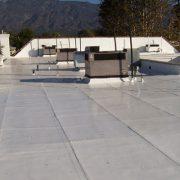Causes of Dampness and Benefits of Waterproofing
If you have a house that you are trying to sell, then you should be well aware of the fact that dampness can affect your chances of ever selling the home. At best, you will probably sell the house for about three quarters of its value and definitely not for its full value.
If you are still living in the house, dampness can have a lot of ill effects including encouraging mold and mildew which can have negative health effects. Dampness could also ruin the structural integrity of the house.
If you have a basement, keeping it dry through waterproofing can be useful for making the space more habitable and therefore increase the usable square footage of your home.
What causes dampness
Dampness in houses is mainly caused by absorption of moisture into the building material. This can be further accelerated by capillary action that assists the moisture to travel across the building material. The moisture can initially get into the rest of the building from defective or substandard materials, from poor workmanship or from faulty designs in basements, foundations, walls, floors or the roof.
Poor design can also cause condensation which also contributes to the building material becoming damp. Condensation is caused when there are differences in hot and cold air. For example, when warm air in a room gains contact with cold walls, the warm air loses moisture in the form of condensation.
Other cause of dampness are as follows:
- Wetness in the ground and from the foundations can rise up through the walls to the upper levels of the house mainly through capillary action.
- Water splashing on the sides of the walls, for example through rain or poorly designed gutters can also cause dampness in walls.
- Penetration of rain water directly through building materials,
- Condensation in the atmosphere can be absorbed by building materials causing dampness and
- Leaks from bathrooms, water closets, kitchens and other wet areas with poor plumbing can easily find their way into building material
Damage caused by dampness
Dampness in the building materials will eventually result in some or all of the following defects in your house:
- Plaster will easily soften and crumble
- Electrical fittings deteriorate and can then cause short circuits and other dangers related to faulty electrical wiring
- Mosquitoes, termites and other pests and insects begin to thrive in areas of your house and cause pest and insect damage including ruining the structural integrity of your house
- Metallic areas of your house begin to corrode
- Timber areas in your house; warp, buckle and rots and
- Paint begins to flake and acquire discolored patches
Preventing dampness
Waterproofing can prevent the causes of dampness and wetness mentioned above. Surface treatment, to fill up pores that encourage dampness, should be done immediately dampness is noticed.
To do all this, it is important that you find a professional who can get the job done thoroughly and immediately to prevent any dampness from spreading and causing further damage.






